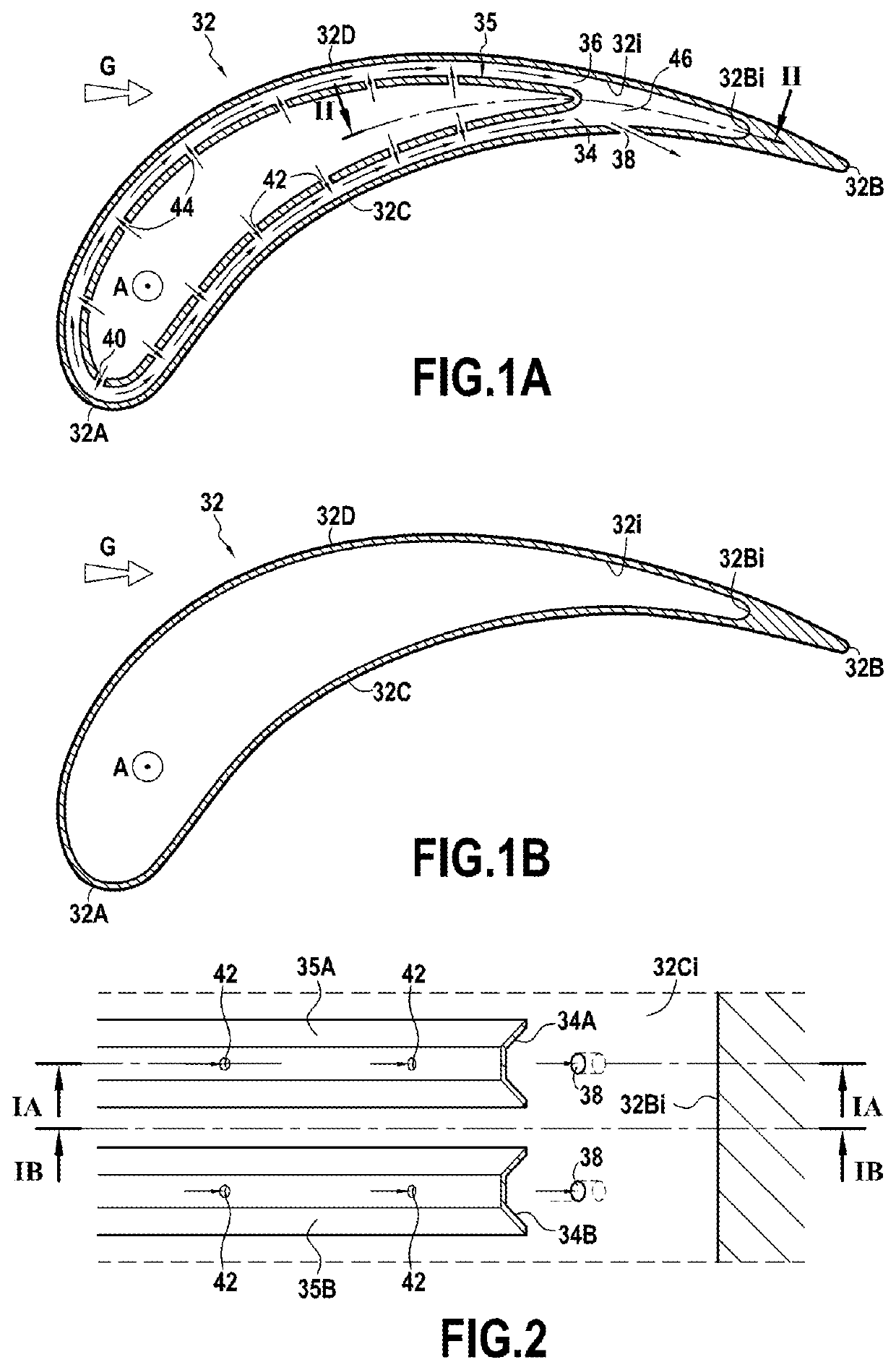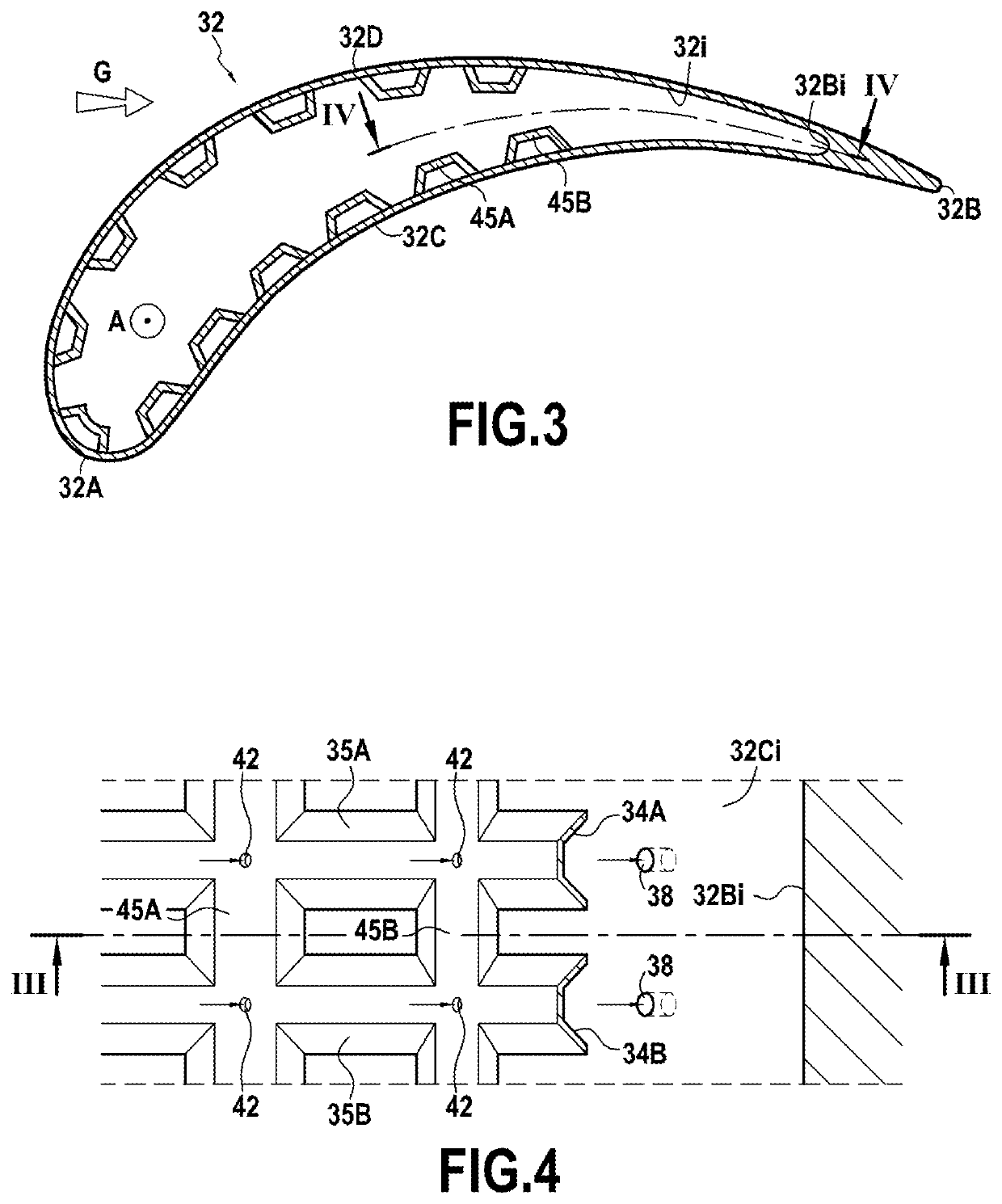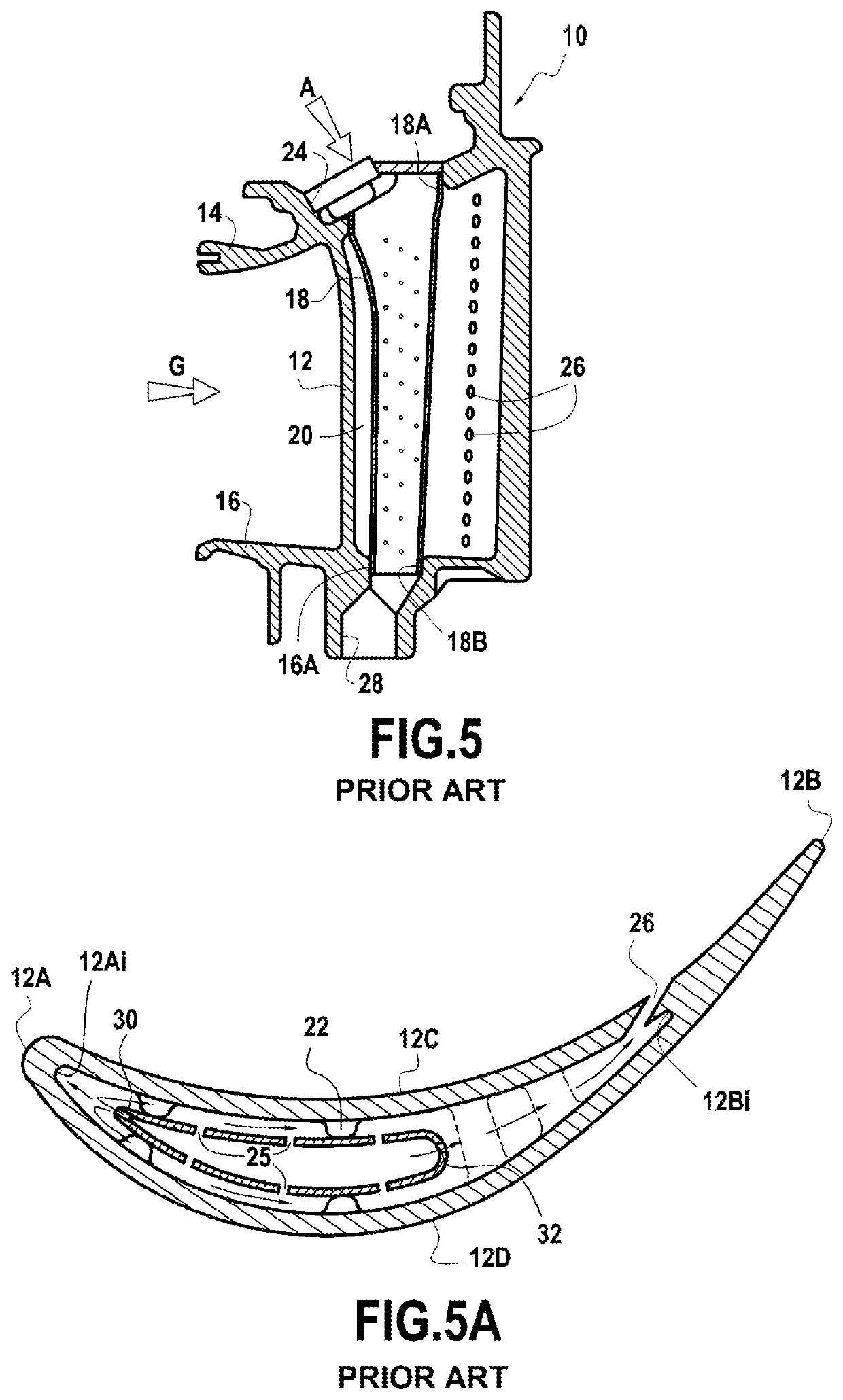Turbine stator blade cooled by air-jet impacts
a stator blade and turbine technology, applied in the direction of stators, machines/engines, mechanical equipment, etc., can solve the problems of limiting the service life of the insert, affecting the efficiency of the turbine, so as to achieve the effect of reducing the size of the inser
- Summary
- Abstract
- Description
- Claims
- Application Information
AI Technical Summary
Benefits of technology
Problems solved by technology
Method used
Image
Examples
Embodiment Construction
[0026]FIGS. 1A and 1B represent in axial section a cooled blade assembly, for example a turbine diffuser of a turbomachine according to the present invention. This blade formed of a hollow airfoil 32 is fixed to a casing (not represented) of the turbine in the flow path of the combustion gases through the turbine whose direction of flow of these gases is illustrated by the arrow referenced G in the figure. A leading edge 32A and a trailing edge 32B opposite to each other and intrados 32C and extrados 32D walls extending radially between a blade root and a blade tip are defined for this airfoil 32.
[0027]Such a blade is subjected to the very high temperatures of the combustion gases and therefore needs to be cooled. For this purpose, a cooling circuit supplied with cooling air at one of its radial ends (the cooling air stream which, in the figure, moves along a radial axis of the blade, from the blade tip to the blade root, is represented by the arrow referenced A), is formed by a plu...
PUM
 Login to View More
Login to View More Abstract
Description
Claims
Application Information
 Login to View More
Login to View More - R&D
- Intellectual Property
- Life Sciences
- Materials
- Tech Scout
- Unparalleled Data Quality
- Higher Quality Content
- 60% Fewer Hallucinations
Browse by: Latest US Patents, China's latest patents, Technical Efficacy Thesaurus, Application Domain, Technology Topic, Popular Technical Reports.
© 2025 PatSnap. All rights reserved.Legal|Privacy policy|Modern Slavery Act Transparency Statement|Sitemap|About US| Contact US: help@patsnap.com



